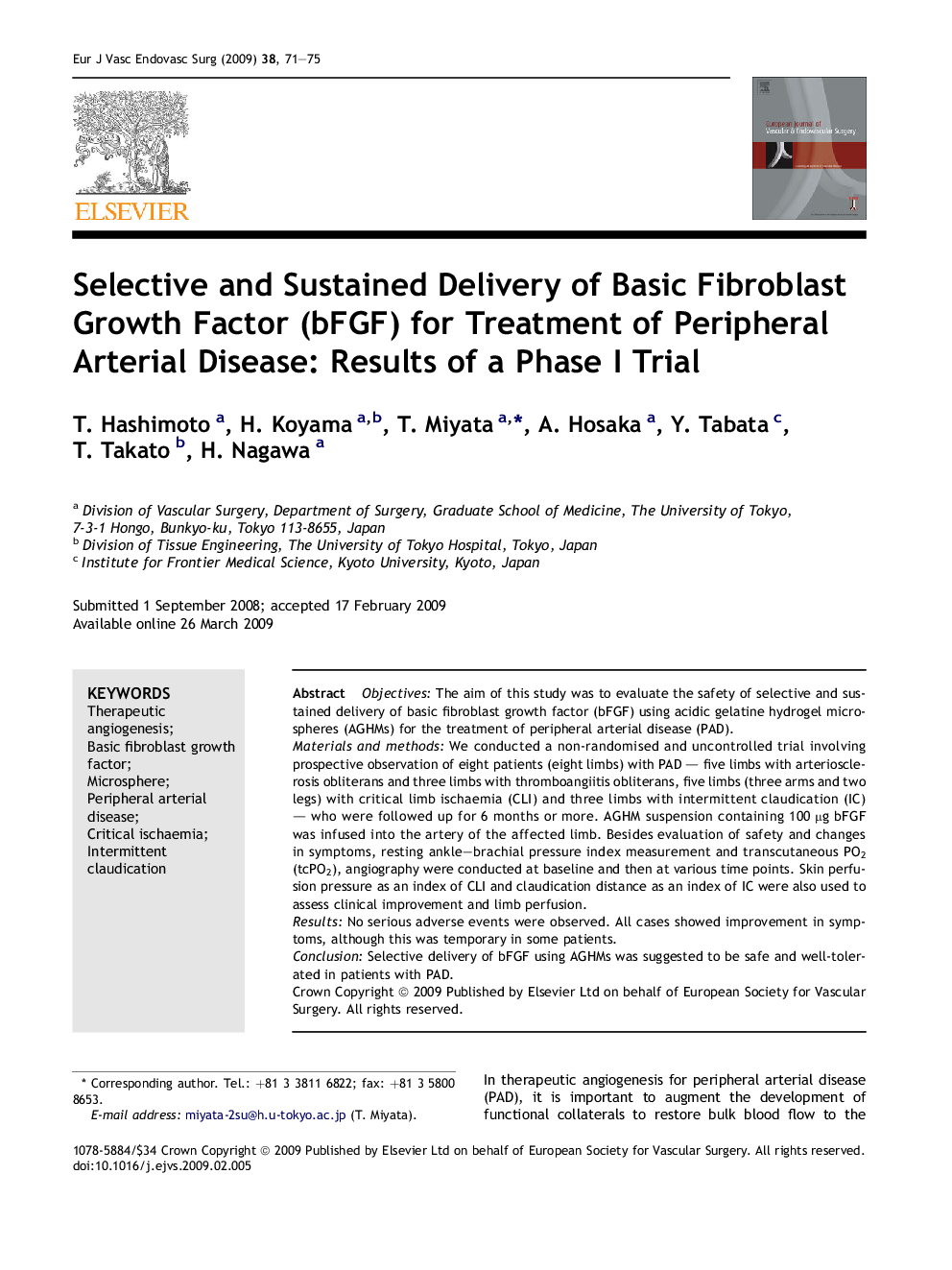| Article ID | Journal | Published Year | Pages | File Type |
|---|---|---|---|---|
| 2914463 | European Journal of Vascular and Endovascular Surgery | 2009 | 5 Pages |
ObjectivesThe aim of this study was to evaluate the safety of selective and sustained delivery of basic fibroblast growth factor (bFGF) using acidic gelatine hydrogel microspheres (AGHMs) for the treatment of peripheral arterial disease (PAD).Materials and methodsWe conducted a non-randomised and uncontrolled trial involving prospective observation of eight patients (eight limbs) with PAD — five limbs with arteriosclerosis obliterans and three limbs with thromboangiitis obliterans, five limbs (three arms and two legs) with critical limb ischaemia (CLI) and three limbs with intermittent claudication (IC) — who were followed up for 6 months or more. AGHM suspension containing 100 μg bFGF was infused into the artery of the affected limb. Besides evaluation of safety and changes in symptoms, resting ankle–brachial pressure index measurement and transcutaneous PO2 (tcPO2), angiography were conducted at baseline and then at various time points. Skin perfusion pressure as an index of CLI and claudication distance as an index of IC were also used to assess clinical improvement and limb perfusion.ResultsNo serious adverse events were observed. All cases showed improvement in symptoms, although this was temporary in some patients.ConclusionSelective delivery of bFGF using AGHMs was suggested to be safe and well-tolerated in patients with PAD.
